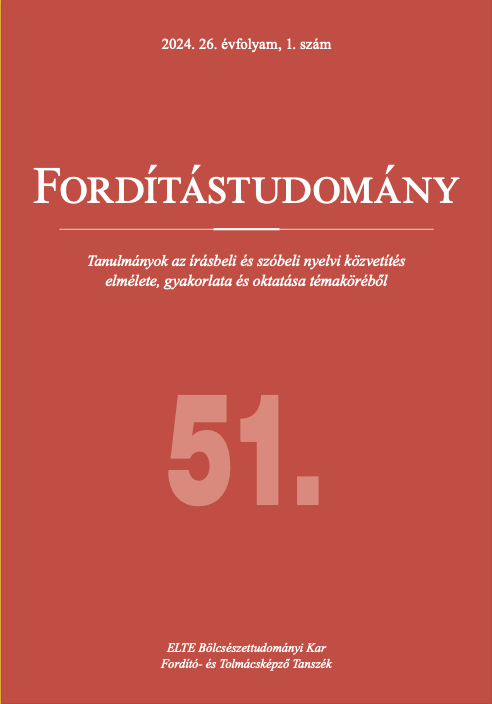A spanyol és a magyar nyelv információs szerkezetének összehasonlítása fordítástechnikai szempontok alapján
Absztrakt
Ebben cikkben párhuzamos korpuszon keresztül mutatom be a ma- gyar és a spanyol információszerkezet megfeleltethetőségét, azonosságait és kü- lönbségeit. Az elemzés során megnéztem, hogy a forrásnyelvi szövegek fókuszai és topikjai a fordításokban is megtartották-e eredeti szerepüket, illetve, hogy a fordításokban szereplő topikok és fókuszok eredetileg is topikok és fókuszok vol-tak-e. Az elemzés tapasztalatai alapján elmondható, hogy magyar nyelvre fordítás- kor sokszor ott is fókuszt fordítunk, ahol a forrásnyelvi szövegben nem szerepelt fókusz, míg a spanyol nyelvre fordításkor inkább „elvesznek” a fókuszszerepű ösz- szetevők. Úgy tűnik, hogy a magyar nyelv több szerkezeti fókuszt használ, például preferálja a fókusz használatát a deiktikus vagy anaforikus határozószavak eseté- ben, ahol a szó jelentése kevésbé konkrét (így, úgy, itt, ott). Másik fontos tapaszta- lat, hogy viszonylag nagy számban találtam eltérő topikválasztást. Az eltérő topik- választás magas számát azzal magyarázhatjuk, hogy az a tény, hogy egy határozott, specifikus NP (Nominal Phrase, NP) topikban van-e vagy sem, nem befolyásolja a mondat igazságfeltételeit. Ellentétben a fókuszálással, amely során megváltoznak az igazságfeltételek. Ezért a fordítók könnyebben eltérnek az eredeti szövegtől a topikválasztás tekintetében. Célom fordítási megoldások gyűjtése is volt. Ezek a példák jól illusztrálják, hogyan hidalhatók át fordítástechnikai eszközökkel a két nyelv információs szerkezete közötti különbségek.










1.png)
